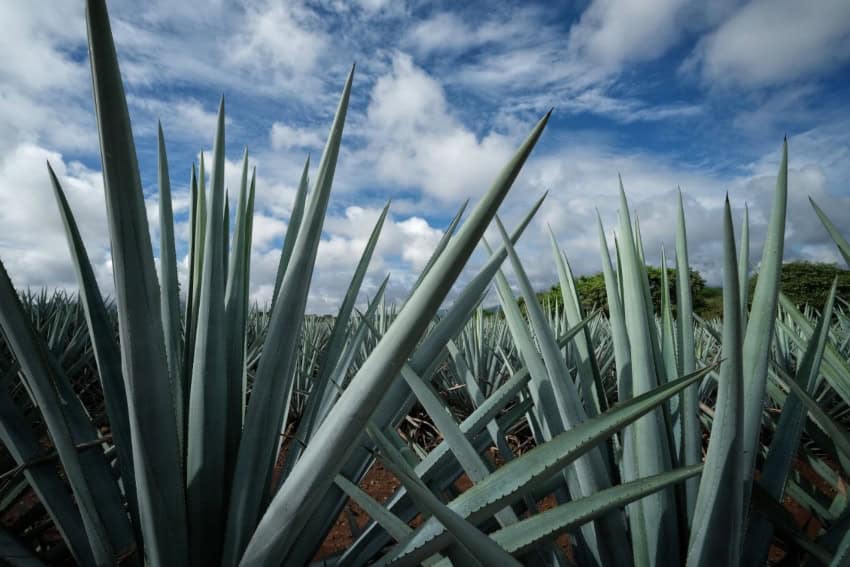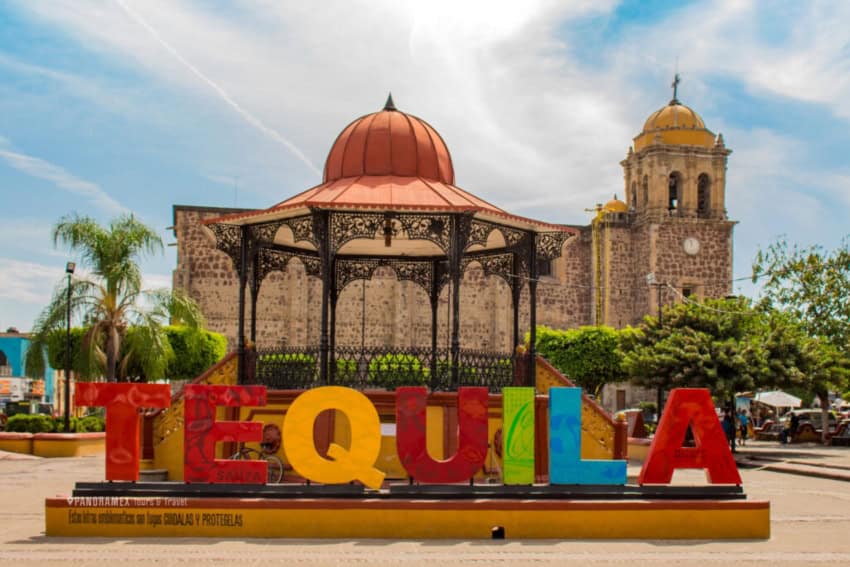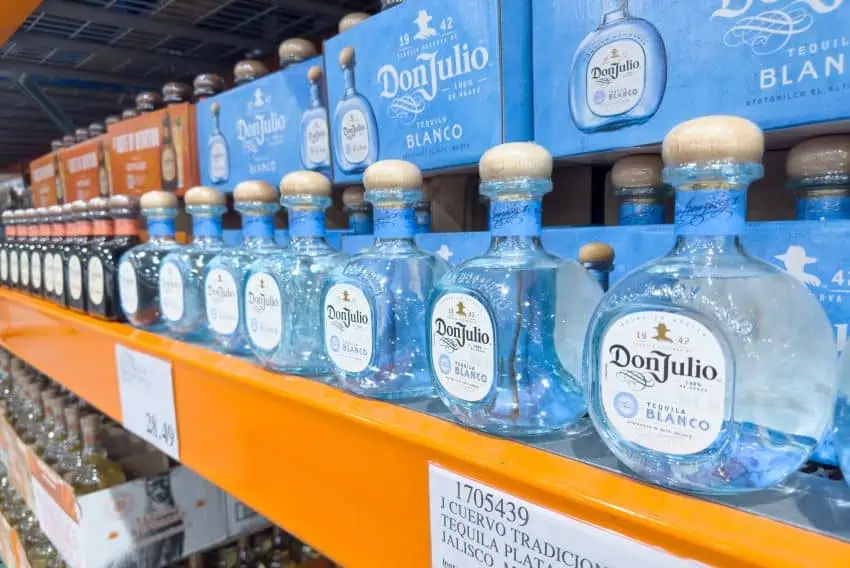In the red-clay hills east of Guadalajara, where endless rows of blue agave ripple toward the horizon, the next chapter of Jalisco’s tequila story is taking shape. The state has unveiled the Los Altos Tequila Route, a new tourism corridor that links eight highland towns known for producing some of Mexico’s distinctive tequilas and for keeping alive the rural tradition behind them.
The announcement coincided with the Spirits Selection by Concours Mondial de Bruxelles. This international tasting event brought producers and judges to Guadalajara, Tequila, Puerto Vallarta and several of the state’s Pueblos Mágicos. With Guadalajara preparing to host matches for the 2026 FIFA World Cup, Jalisco’s tourism officials see an opportunity to set part of that global spotlight on the region’s agricultural interior.
A new tequila trail

For more than a decade, the original Tequila Route west of Guadalajara has drawn visitors to the namesake town and surrounding UENSCO-listed agave fields. The new Los Altos circuit turns the focus eastward, to higher elevations, where the soil is rich with iron and the cooler climate yields sweeter, fruit-forward agaves.
The route connects Acatic, Tepatitlán, San Ignacio Cerro Gordo, Arandas, Jesús María, Atotonilco El Alto, Ayotlán and Tototlán, communities that together offer more than 1,600 rooms, 530 restaurants and 75 organized visitor experiences. Travelers can tour small-batch distilleries, stay at family haciendas or join workshops that walk them through every stage of tequila production, from hand-harvesting the piñas to barrel aging and tasting.
Signature attractions
Among the signature stops is the forthcoming Clase Azul Interpretive Museum and Los González Reserve, which plans to combine horseback rides through agave plantations with interpretive exhibits exploring the craftsmanship behind the brand’s ceramic bottles. In Arandas, construction has begun on Mundo de Don Julio, a cultural complex that will include a restaurant, museum and guided experiences celebrating one of Mexico’s most recognized labels.
To the south, El Tesoro de los Altos by Campo Azul is being developed as a countryside retreat with cabins overlooking the fields, ATV excursions, and blending workshops led by local distillers. Nearby, Farm-to-Table by Tequila San Matías will showcase regional ingredients — corn, goat cheese, chiles and fresh herbs — served with tequila pairings and talks on sustainable agriculture. And at Casa Loy, outside Tepatitlán, chefs are designing menus that connect contemporary Mexican cooking with traditional highland spirits.
These plans are all part of the tourism board’s greater design to expand the state’s tourism sectors beyond the coastal resorts and Guadalajara, especially as the state braces for an influx of tourists during the World Cup.
A booming industry, but how much room to grow?
Tequila’s tourism appeal is undeniable. Tequila received 1.2 million visitors in 2023, a 19% increase from 2019. While that period includes the pandemic years, when international travel slowed, it’s worth noting that Mexico was one of the few countries to keep its borders open. As a result, domestic and regional travel surged, and destinations like Tequila saw massive growth.

For a small town, 1.2 million annual visitors is a significant number, and it signals a clear appetite for spirits-based tourism. The question now is whether the Los Altos corridor can capture a share of that interest and disperse it more evenly across the state.
Jalisco as a whole is riding a wave of momentum. In the first trimester of 2025, the state recorded 11 million visitors. Puerto Vallarta alone receives about two million travelers per year, while Guadalajara welcomed roughly 16 million in 2024. The new highlands circuit could help balance that flow, but whether it can divert enough travelers from established destinations to make a measurable difference in overcrowding remains to be seen.
What’s clear, however, is that there is real demand for tequila-related experiences, and the highlands offer a way to expand the narrative beyond one small, over-visited town.
Positioning for the World Cup boom
State officials expect the Los Altos route to be fully operational by the time the 2026 FIFA World Cup begins. Guadalajara will serve as one of Mexico’s three host cities, and tourism authorities estimate that the tournament could bring an additional five million visitors nationwide and generate several billion dollars in tourism spending.
By opening up a new tourism corridor, the plan is to help thin out the rush of crowds who will surely flood Guadalajara and the beaches around the Bay of Banderas. Road improvements, new signage, and a digital map are in the works to make the circuit easier for self-guided travelers.
Ready for diversification
Tequila remains one of Mexico’s most lucrative exports, generating nearly US $4 billion in 2024, according to the Tequila Regulatory Council. But much of that profit still flows to large-scale producers. The Los Altos initiative aims to integrate smaller distilleries, agave farmers and local entrepreneurs into the formal tourism network.

Community cooperatives and municipal governments are collaborating on training programs for guides, restaurateurs and homestay owners to help professionalize services while keeping management local.
The highlands of Jalisco were inscribed by UNESCO in 2006 as part of the Agave Landscape and Ancient Industrial Facilities of Tequila. Preserving that legacy has become central to the route’s long-term vision.
Participating distilleries are adopting water-recycling systems, composting agave waste and restoring native vegetation around their fields. Many of the new visitor programs include lessons on biodiversity and reforestation. The state’s Sustainable Tourism Council has said that it will oversee certification to ensure that growth does not compromise environmental standards.
A new tourism model
Los Altos is one element of a larger push to diversify Jalisco’s food and beverage tourism. Along the Pacific coast, the Raicilla Route continues to expand, introducing travelers to the lesser-known smoky spirit native to Jalisco. Two wine routes are also being developed in the highlands.
Together, these projects are pointing to a new phase in Jalisco’s tourism model, one that has traditionally relied on sun-and-sand tourism. For travelers, the Los Altos Tequila Route is a window into the landscapes and the personalities behind Mexico’s national drink. Visitors driving the route will pass small roadside distilleries, open-air markets and fields where jimadores still harvest by hand.
As the countdown to the World Cup continues, Jalisco is betting that these quiet hills will draw as much curiosity as the crowds in the stadium of Guadalajara. For the communities of Los Altos, the hope is that attention may bring recognition and a more sustainable future.
Meagan Drillinger is a New York native who has spent the past 15 years traveling around and writing about Mexico. While she’s on the road for assignments most of the time, Puerto Vallarta is her home base. Follow her travels on Instagram at @drillinjourneys or through her blog at drillinjourneys.com.
